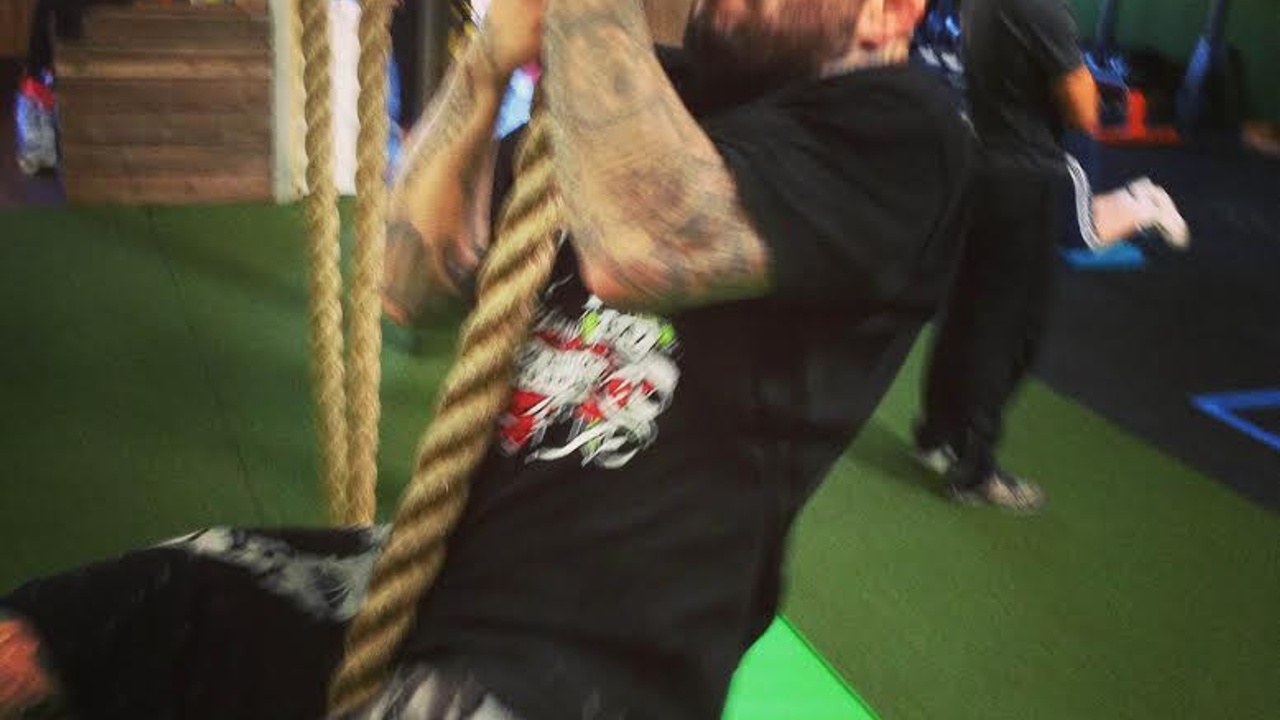
The Power of Rope Climbing for Wrestlers, Grapplers, and Fighters
If you've ever experienced the demanding nature of rope climbing, you know it's a true test of strength and endurance. Unlike traditional gym exercises, rope climbing engages multiple muscle groups, including the arms, upper back, core, grip strength, and legs. For wrestlers, grapplers, and fighters, rope climbing offers a remarkable opportunity to build functional strength that directly translates into dominance on the mat or in the cage.
In this article, we will explore why rope climbing surpasses pull-ups in terms of intensity and effectiveness. We will also discuss the importance of focusing on "no leg" exercises to maximize strength gains. Additionally, we will provide exercise progressions, workout ideas, and safety precautions to help you unlock the full potential of rope climbing.
So, are you ready to challenge yourself and transform your athletic performance? Let's dive into the world of rope climbing and discover how it can take your grappling and fighting abilities to the next level.
Better Than Pull-Ups? The Rope Climbing Advantage
While pull-ups on a bar are undoubtedly beneficial, rope climbing offers a unique advantage for athletes. The grip angle, thickness of the rope, and the act of climbing hand over hand present a greater challenge than traditional pull-ups. Rope climbing requires significant grip strength and endurance, making it a superior exercise for wrestlers, grapplers, and fighters looking to improve their performance on the mat or in the cage.
Legs or No Legs? Focusing on Strength Building
Efficiency is not the primary concern when it comes to rope climbing for wrestlers, grapplers, and fighters. Unlike military, Crossfit, or adventure racers who aim for efficient climbing, combat athletes should focus on developing strength. Therefore, we will primarily concentrate on "no leg" exercises to build upper body and grip strength.
Exercise Progressions: From Foundation to Mastery
-
Sled Drags: Begin by using a sled to get accustomed to the hand over hand movement and develop the necessary strength and endurance.
-
No Sled, No Problem: Attach your rope to a bar and pull weights, replicating the hand over hand movement and strengthening your grip.
-
Never-ending Horizontal Rope Pulls: Wrap the rope around a large post to create resistance and perform continuous pulling exercises in various positions, such as seated, standing, in the plank, or lying on the floor.
-
Never-ending Vertical Rope Pulls: Increase the anchor point height to simulate the vertical pull required for rope climbing, further challenging your upper body strength.
-
Standing to Lying Hand Walks: Increase intensity without supporting your entire bodyweight, focusing on intense upper body engagement.
-
Rope Handle Pull-Ups: Introduce the challenge of pulling your own body weight while using rope handles, adding variety to traditional pull-up variations.
-
Rope Hang Isometrics: Develop strength through static holds, enhancing your ability to maintain grip and endurance during matches.
-
Rope Climbs: Once you have built a solid foundation and mastered the previous progressions, it's time to conquer the rope climb itself.
Additional Challenges and Workout Ideas:
-
Counting Reps: Track progress by counting the number of rope pull-ups or climbs you can perform, pushing yourself to surpass previous achievements.
-
Distance: Gradually increase the climbing distance, starting from halfway up and back, and progressing to full climbs. Alternatively, perform multiple climbs sequentially to enhance endurance.
-
Time: Challenge yourself to complete as many climbs or reps as possible within a given time frame, such as 30 seconds, 60 seconds, or 120 seconds, pushing the boundaries of your stamina.
-
Friendly Competition: Race a friend or training partner, igniting your competitive spirit and motivating you to work harder and achieve new heights.
Safety First: Developing a Solid Foundation
Before attempting more advanced challenges, it is crucial to develop a solid foundation and prioritize safety. Begin with ground-based challenges and exercises to build strength, stability, and technique. This approach allows you to progress safely while minimizing the risk of injury.
Rope climbing is a highly effective and efficient exercise for wrestlers, grapplers, and fighters. By incorporating rope climbing workouts into your training regimen, you can significantly improve grip strength, upper body power, and endurance, giving you a competitive edge on the mat or in the cage. Remember to start with a solid foundation, progress through exercise variations, and challenge yourself with diverse workout ideas. Embrace the intensity, push your limits, and witness the transformation in your athletic performance.
Citations:
- Rope climbing benefits and exercises: https://www.stack.com/a/rope-climbing-for-athletes
- Grip strength and its importance in combat sports: https://www.ncbi.nlm.nih.gov/pmc/articles/PMC4549687/
- Benefits of isometric training for combat athletes: https://www.unm.edu/~lkravitz/Article%20folder/isometricUNM.html




